How to Drive a Fast Boat Safely
On the water, the sensation of speed is enhanced. For most people, 50 mph in a boat feels like 70 or 80 on the road. Those who have run triple digits on the water know that there’s more to operating a boat than slamming the throttles forward and hanging on. Attention needs to be paid to the boat’s trim, over-revving the engines when running in waves and, of course, the conditions. The following are the details that require attention to traveling across the water at high speeds.
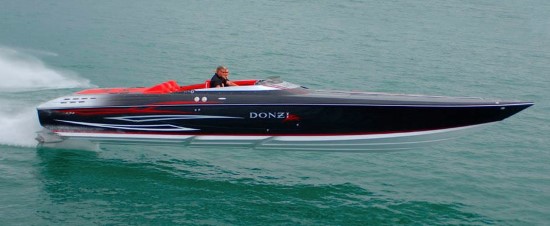
Riding in a performance boat with a veteran driver can be one of the most exhilarating experiences on the water.
Bottoms Up. Before slipping into the bolster or high-backed bucket seat of any performance boat, a driver needs to know what kind of hull bottom design is beneath him. Traditional offshore performance boats have Deep-V bottoms with at least 20 degrees of deadrise at the transom. To run fast in calm water, they require lots of positive trim and are actually happier running in some chop. Bass boats have similar designs with shallower deadrise, a keel pad and a broad bow flare that help create lift. But they perform best and most safely in smooth water.
Stepped V-bottoms literally have steps designed into the running surface that generate lift and require less positive drive trim. These boats run flatter and faster on the same power compared to a conventional V-bottom. Catamarans are air-entrapment designs with two hulls connected by a flat deck in between. They are designed to run on top of the water and are the fastest of the three designs power for power.
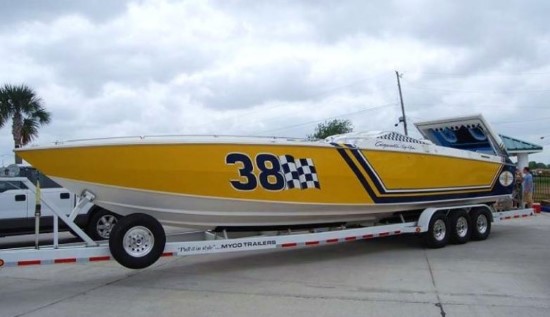
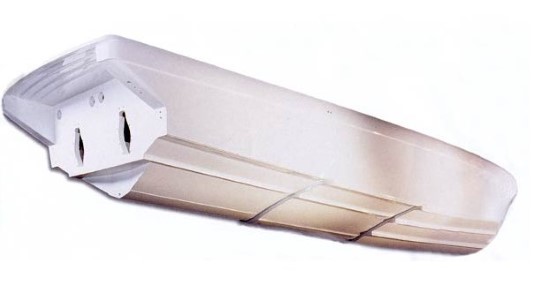
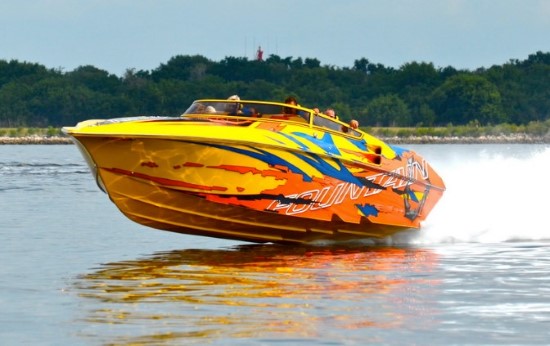
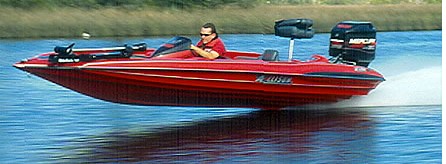
Required Equipment. A boat that is designed to run 60 mph or faster should have hydraulic steering. It provides more precise control by using pressure in the system’s hoses to move the drives or outboards when the steering wheel is turned. Some of the best-known names in hydraulic steering systems are Latham Marine, IMCO Marine and SeaStar. Conventional cable systems lack the precision or durability to hold up in performance applications. For running in offshore conditions, heavy-duty trim tabs such as Mercury Racing K-planes or similar units from Livorsi Marine with position indicators at the helm are a must. For the boat’s interior, the captain and a companion travel in stand-up bolsters with dropout bottoms or high-backed bucket seats in sit-down boats.
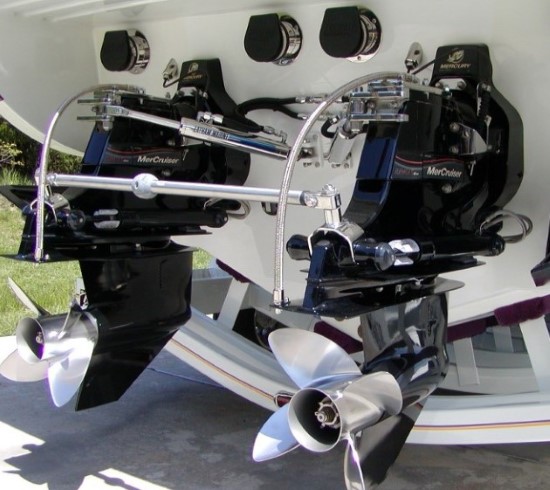
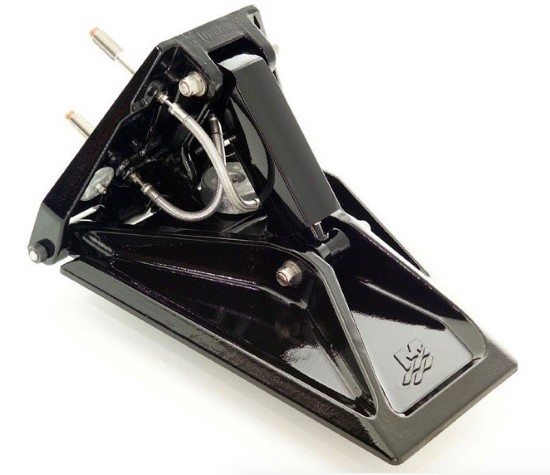
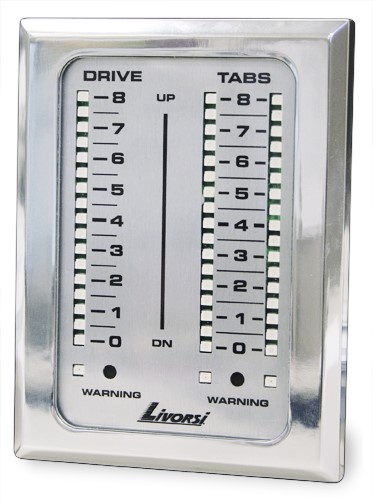
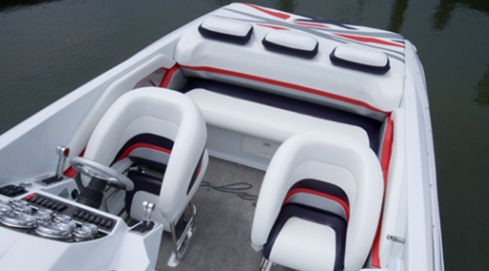
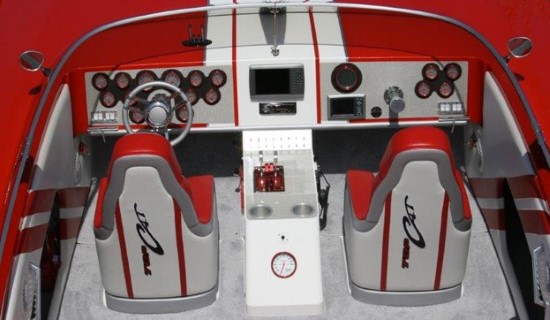
Trim Tabs. A captain moving up from a runabout with trim tabs will be used to trim buttons oriented so that pushing the button up trims down the bow. Performance boats usually have the buttons positioned so that pushing the button up raises the drive or tab, which actually creates the opposite effect of what the driver is used to. Additionally, on most runabouts, the tab buttons are set so that pressing the starboard button raises or lowers that side of the boat. With go-fast boats, pressing the starboard button moves the starboard tab. A captain needs to understand how the tabs on his boat work before heading out on the water.
Know Neutral. On any performance boat, the captain should know what neutral or level trim is. With the boat on the trailer, use a level to find neutral for the drives and tabs, if equipped. This will vary from boat to boat because of transom angle. Have someone at the helm raise or lower the drives until a level pressed against the bottom of the anti-cavitation plates on the drives zeroes out.
Do the same by aligning the tabs with the running surface. Note the position on the trim indicators for the drives and tabs. Remember that trim tabs can be lowered to keep more of the boat in the water in rough conditions or to level loads, but unlike drives, the boat won’t go faster if the tabs are raised past neutral. Once they lose contact with the water, they make no difference.
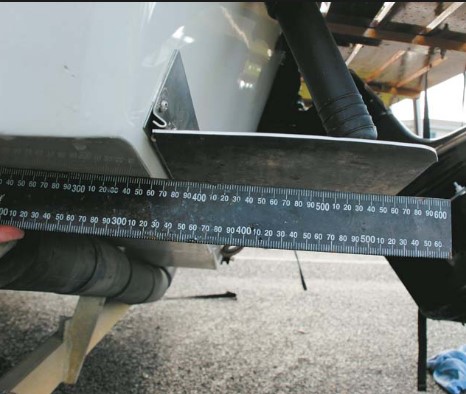
Bring Her on Plane. A go-fast designed for all-around performance will plane off easily in most cases. Use enough power to get the bow to drop quickly to maintain good forward visibility. Some older designs propped exclusively for top end required the driver to nail the throttles and wait for props to catch after over-spinning initially.
On some boats with high bow rise, losing forward visibility can be a problem. Make sure the way is clear ahead and get the bow down quickly.
Head-On. Especially in a performance boat, the captain is responsible for keeping the least comfortable passenger as content as possible. That means keeping the boat riding level fore to aft and laterally. For virtually all designs, the approach is the same when running into head seas. Start with the drives and tabs trimmed down with the tabs at neutral or slightly below to extend the length of the boat’s running surface. To pick up speed, trim out the drives a little at a time so that the boat is still riding level and skimming across the waves cleanly.
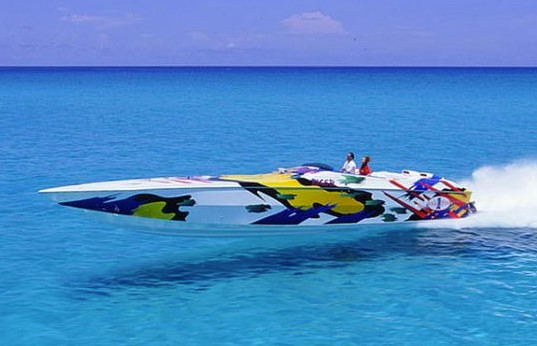
for the conditions.
Following Seas. Running with the waves is a little more challenging because using too much negative trim will cause the bow to stuff into the back of the lead wave and excessive positive trim will cause the stern to “trip” off a wave and throw the bow skyward. This often results in the bow slapping down, which, depending on the impact, will hurt passengers or eject them. To run safely in following seas, use enough positive drive and tab trim to run slightly bow up. If the bow starts hopping, the trim is too high and needs to be tucked in a little. If the bow plows through the water and pulls to one side or the other a little more positive trim is required.
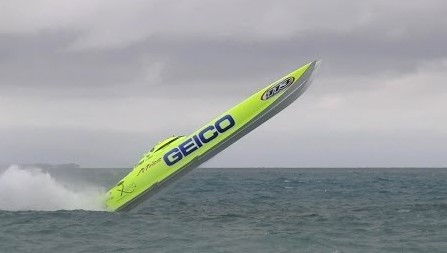
Quartering Seas. Anytime waves are parallel or quartering to a boat, the captain’s trimming skills will be put to the test. If a boat is running parallel to the waves, lower the tab on the opposite side of the boat to level the ride and set the drives at neutral. With waves hitting the boat from the aft quarter on either side, take the same approach. Use the tabs to level the boat and trim out the drives incrementally. If the boat doesn’t have tabs, use the drives to level the boat.
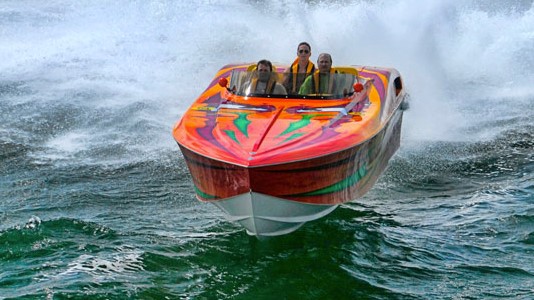
Turn Smart. Performance boats were never meant to be turned like personal watercraft or ski boats, but people still seem to want to try it. With a non-stepped V-bottom, before turning, either trim down the drives or pull back on the throttle to reduce the speed and set the boat in the water. Hold the steering wheel in a constant position to complete the arc and maintain consistent throttle to keep the boat on plane.
Drivers of some stepped hulls get in trouble when turning a stepped hull because they use the same approach as turning a non-stepped hull. Never apply negative trim to a stepped hull prior to turning. This forces the bow down too far. It will dig in and the stern will snap around, causing the boat to spin out or “swap ends.” When turning a stepped hull, leave the drive trim where it’s set, raise the tabs (if so equipped) and make the turn with the same steady hold on the steering wheel and the same consistent throttle pressure. Be ready to correct the wheel against the turn if the boat feels like the rear end wants to kick out.
Keep a Lookout. Hitting another boat, a piling, or some obstruction can ruin your whole day. When going fast, you should know the waters you are in and stay safely in deep water. Keep any eye out forward and left and right for other boats. Move away from them and don’t play chicken.
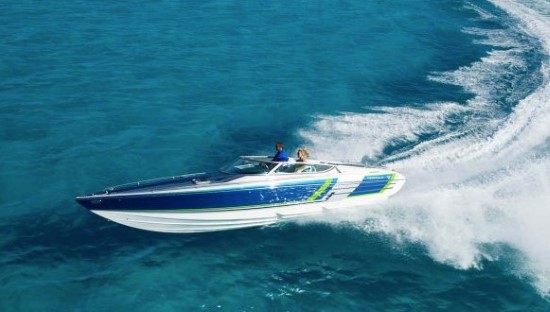
Walk on the Wild Side. The key to running any performance boat is that small things make a big difference. A positive tap on the trim buttons could be all that is required to “free up” a boat to run those big speed numbers. It can also be the difference between being in control and causing a disconcerting handling problem. How a captain responds to these scenarios is crucial.
When running at speeds above 80 mph, he can’t just yank back on the throttles and hope the boat settles. If a boat starts chine-walking, pull back on the throttles a little or trim down the tabs slightly to stop the oscillation. An experienced pilot can “drive out” of a chine walk without slowing down, but that’s a move best left to veterans. The easiest way to stop a boat from porpoising is to trim down or apply a little more throttle because the boat is searching for more speed.
Most Important. Don’t drive fast at night. No matter how good you think you are, don’t drive fast at night. Every year, people are killed driving into unseen breakwaters, pilings, boats, barges, and even islands. Each year, driving fast at night claims scores of deaths.
Safety First
Fast boats are fun but in the wrong hands they can be dangerous. Unfortunately, it seems that the people with the least amount of experience are often drawn to race boats like moths to a light. By definition, these are people who like the thrill of living dangerously.
If you are one of those people, just remember that over about 350 people are killed each year in boating accidents, and speeding, out of control boats are the biggest single cause of death.
Never Drink and Drive a Boat. Sounds obvious, but all too many people do it. If you are going to break this cardinal rule, at least don’t drive fast.
For years, our advice to boaters who see Cigarette-type high performance boats speeding along is to always head behind them. Chances are they don’t see you, and behind them is the safest place to be.